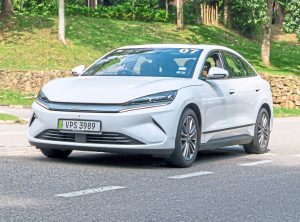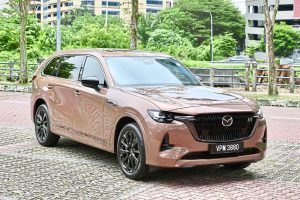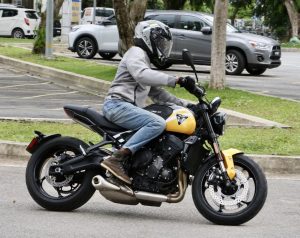BERLIN: The Opel 4 PS from 1924 looked like a rowing boat on narrow wheels with fragile bodywork and a soft top made of thin cloth.
It was the first car to be mass-produced in Germany along the lines pioneered by Henry Ford in the United States and it quickly gained the nickname "Laubfrosch" for its green paint finish.
The name means "treefrog" in German and the car was initially only available in green in a bid to cut costs, just like the Ford Model T was sold only in black trim.
The Opel was aimed at the less expensive end of the German market and nearly 120,000 were sold until production ceased in 1931.
Green stood for economy rather than ecology and the 4 PS (horsepower) model was designed to revive Opel's fortunes in the wake of World War I.

The brothers Wilhelm and Fritz had decided to make a radical new start, as Leif Rohwedder, head of Opel's classic cars department quotes from the company chronicle.
The pair visited assembly line production at Ford and even though their own assembly set-up in Rüsselsheim in Germany was only 45 metres long to start with, 25 cars were turned out per day, rising to 125 daily as the production track grew in length to two kilometres.
The Opel boys made careful notes during their trip and discovered that their competitors had got costs under control through rationalisation
Instead of using elaborate wheel rims, the first Opel has disc wheels made of pressed steel, had only one door for the driver and pointed boat tail bodywork.

A 9 kW/12 hp engine was provided and a more powerful saloon and three-seater came later.
Historians agree that the treefrog was a progressive machine and a true forerunner of the Nazi-inspired Volkswagen Beetle which became one of the best-ever selling cars worldwide, said Frank Wilke from market watcher Classic Analytics in Bochum.
The little Opel was hardly cheap at the time, with an initial base price of 4,500 Rentenmark, the currency used in the Weimar Republic. Indeed it cost as much to buy as a modest house.
As numbers increased and more efficient production methods kicked in, the Opel brothers gradually halved the price.

It pays to have some muscle power in your elbow in order to crank the in-line four-cylinder into action, but once the engine has fired, the motor settles down quickly and the car drives like a much more modern car.
One oddity back then was a gear-shift linkage between the seats instead of outside the bodywork, as was usual at this time, while the three pedals in the footwell for brake, clutch and accelerator are familiar.
The car is not for those in a hurry either. When new, the 4 PS was hard put to reach more than 60 kilometres per hour. These days even that would be too fast since the brakes have about as much bite as bicycle rim stoppers.
The soft top also starts fluttering around even at a walking pace. The rudimentary suspension was designed to cope with cart tracks but the treefrog is a real boneshaker.

It seems contemporary customers were still satisfied. Rohwedder showed a letter from one buyer who thanked the Opels for 500 trouble-free kilometres a week.
Despite its significance for Opel, fans of the marque are more interested in recent classic models like the Manta, Commodore or Calibra. But that wasn't always the case, says classic car specialist Frank Wilke.
The little car is not suited to modern roads although it did enjoy popularity in the 1970s when a few more were still around albeit seldom in regular use.
"What's more, it didn't cost the earth to buy and was so simply constructed that you could maintain it with standard household tools," says Wilke.
However, by the turn of the millennium at the latest, the "Laubfrosch", like all other pre-war cars, had increasingly fallen out of favour.

Wilke now senses a revival as young people are becoming interested "You can now attract more attention with one of these than with a Gullwing Mercedes-Benz or a Ferrari."
Buyers only have to pay a fraction of the price of these exotics in order to own one, since in good condition a Laubfrosch now costs around €22,000 (RM108,000) in Germany.
A footnote to the treefrog story is a lawsuit filed by French maker Citroen which accused Opel of copying its similar-looking 5 CV model.
The French lost the case after judges ruled that the Citroen was always sold in yellow and nicknamed "the lemon" long before the word became a slang term to describe an inferior product. The judges saw no copyright infringement.













